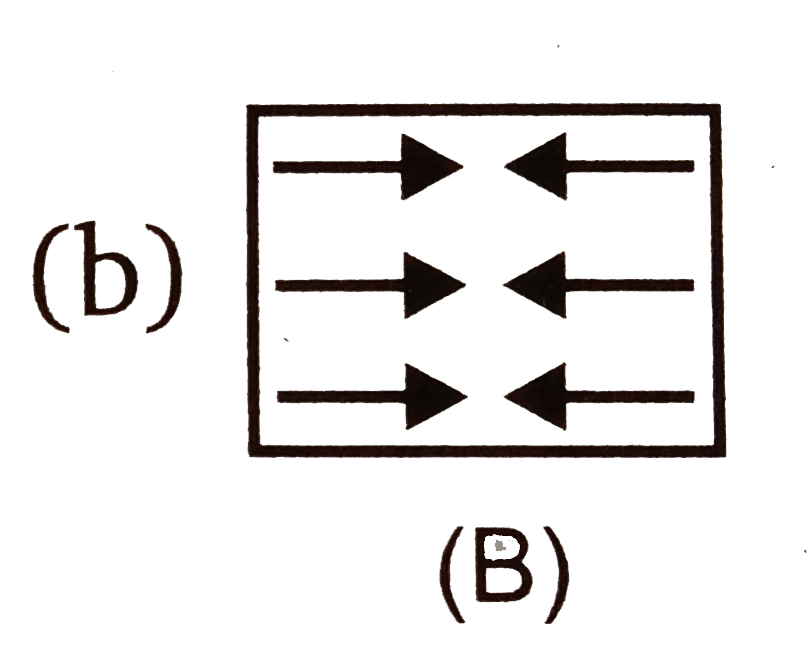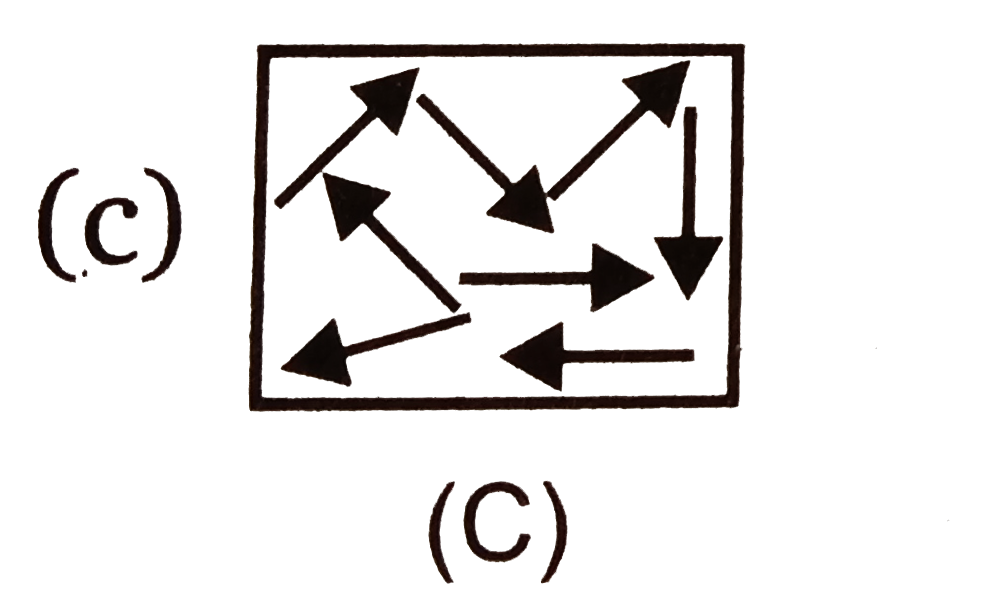A physics teacher tells his students in class that in paramagnetic materials, every atom has some permanent magnetic dipole moment. In the absence of an external magnetic fund, the atomic dipoles are randomly oriented so that average magnetic moment per unit volume of the material is zero. Therefore, in the absence of an external magnetic field, a paramagnetic material does not behave as a magnet. When an external magnetic field is applied, the torque developed tries to align the atomic magnetic dipoles in the direction of the field. That is why the specimen gets magnetized weakly in the direction of the field.
Read the above passage and answer the following questions:
(i) Name any three paramagnetic materials.
(ii) Name any two ferromagnetic materials. How is their behavior different from that of paramagnetic materials?
(iii) The teacher asks the students how true is the famous saying: 'Spare the rod and spoil the child,' comment.
Text Solution
(i) Example of paramagnetic materials are Aluminium, chromium, oxygen.
(ii) Iron and cobalt are two ferromagnetic materials. The ferromagnetic substances show all the properties of paramagnetic substances, but to a much larger degree. For example, relative magnetic permeability (μr) of paramagnetic substances is slightly greater than 1, whereas μr of ferromagnetic substances is much larger than 1.
(iii) The saying seems to be true. In the absence of external magnetic field (say, teacher) atomic dipoles (say, students) are randomly oriented (sitting helter skelter and gossiping). When external magnetic field is applied (teacher comes to class), atomic dipoles are aligned in the direction of the field (students orient themselves towards the teacher).
Yet another proof of the same is that when a magnet is suspended freely from an unspun silk thread, it comes to rest along N-S direction only. This is because earth is behaving as a magnet. It disciplines the magnet forcing it to say along N-S direction always.
|
Topper's Solved these Questions
- MAGNETIC EFFECT OF CURRENT AND MAGNETISMBOOK - PRADEEPCHAPTER - MAGNETIC EFFECT OF CURRENT AND MAGNETISMEXERCISE - Exercise
412 Videos
- MAGNETIC EFFECT OF CURRENT AND MAGNETISMBOOK - PRADEEPCHAPTER - MAGNETIC EFFECT OF CURRENT AND MAGNETISMEXERCISE - Test Your Grip (a)
1 Videos
- MAGNETIC EFFECT OF CURRENT AND MAGNETISMBOOK - PRADEEPCHAPTER - MAGNETIC EFFECT OF CURRENT AND MAGNETISMEXERCISE - NCERT Exemplar Problems (Chapter 5 Short Answer Questions)
1 Videos
- ELECTROSTATICSBOOK - PRADEEPCHAPTER - ELECTROSTATICSEXERCISE - ASSERTION-REASON TYPE QUESTIONS
2 Videos
- OPTICSBOOK - PRADEEPCHAPTER - OPTICSEXERCISE - Multiple choice questions
1 Videos
Similar Questions
Knowledge Check
In the absence of external magnetic field, d-orbital is
A3−fold degenerateBNon-degenerateC5−fold degenerateD7−fold degenerateThe magnetic moment of paramagnetic material is
AinfinityBconstant but nowCunityDzeroParamagnetic substances are those, in which the individual atoms, ions or molecules posses a permanent magnetic dipole moment. In the absence of an external magnetic field, the atomic dipoles of paramagentic substance are as below:
A B
B C
C D
D
The permanent magnetic moment of the atoms of a material is zero. The material
View SolutionThe permanent magnetic moment of the atoms of a material is zero. The material
View SolutionThe permanent magnetic moment of the atoms of a material is not zero. The material
View SolutionThe permanent magnetic moment of the atoms of a material is not zero. The material
View SolutionWhen will a magnet in an external magnetic field be in unstable equilibrium?
View Solution
